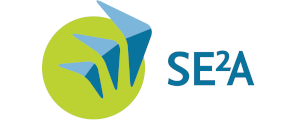
Who are you and what is your research topic?
My name is Stefanie Ollenburg and I have a background in communication design and a master’s degree in futures studies. I am working in the project SCENAIR 2050 (Scenarios for Air Transport System in alternative futures) part of ICA A and the Assessment of the Air Transport System. Based on previous prognostics the project will deliver alternative scenarios using design and foresight methodology and considers socio-economic, cultural and lifestyle factors. My research addresses how alternative scenarios developed in a transdisciplinary process using processes and methods of design can support the pursuit of sustainability in air traffic.
Which research question are you working on?
As a foresight researcher and transformation designer, my interests lie in transdisciplinary scenario research linked to co-creation and participatory methods. In the context of the project, my research question explores the conjunction of methods from design and foresight to promote the development of alternative scenarios and to support veering away from conventional trajectories.
What makes this topic special/exciting for you?
Especially in the realm of sustainable developments novelle approaches are needed to find solutions for the environmental challenges we face today and in the future. Therefore, one aspect in my consideration are participatory approaches and how stakeholders' expectations and preferences for future developments can be challenged to improve their ability to think about the future so that they can make more informed decisions towards innovation. Thus, it is exciting to be part of such a renowned interdisciplinary consortium that aims to transform and innovate air traffic to become sustainable and environmentally friendly.
Why is your topic relevant for future aviation?
The challenge for a future-oriented air traffic system is to look beyond the technical aspects and factor in environment, stakeholders, and users. My research within the foresight methodology of scenario development considers trends in the relevant areas such as technology, society, environment, and design. It also aims to employ for example collective intelligence as means to explore viable futures in air traffic. Embracing this complexity in alternative scenarios could open up avenues beyond what we now think is possible.
What is special about participating in the interdisciplinary research network SE²A?
It is at hand that the urgency and complexity of the topic of sustainable air traffic needs to be addressed through an interdisciplinary consortium. The collaboration with researchers and experts from such diverse fields found in this framework will provide a multitude of perspectives essential for a topic as complex as sustainable air traffic. With my background in design and foresight, I have always been curious to learn new facets and acquire knowledge from many different fields. Thus, my research is only possible if based on interdisciplinarity and diversity of the fields.

Cluster of Excellence SE²A –
Sustainable and Energy-Efficient Aviation
Technische Universität Braunschweig
Hermann-Blenk-Str. 42
38108 Braunschweig
se2a(at)tu-braunschweig.de
+49 531 391 66661
